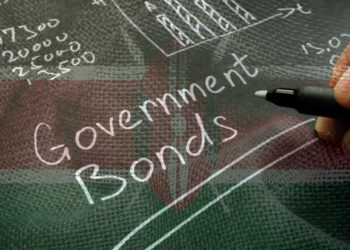Over the last five months, interest rates in Kenya have experienced a rapid increase, reshaping the nation’s financial landscape. This trend commenced in July, with short-term government securities reflecting rates of 11.9, 11.95, and 12.16 percent for the 91-day, 182-day, and 364-day papers, respectively.
The upward trajectory gained momentum following the Central Bank’s decision to raise the central bank rate by 100 basis points to 10.5 percent, up from the existing 9.5 percent, in an effort to contain inflation, which stood at 7.9 percent as of June 2023—0.4 percent points above the target range of 2.5 -7.5 percent.
The policy rate directly influences the cost of borrowing for banks, consequently impacting the rates at which they lend to businesses and individuals. This, in turn, influences the overall interest rate environment, including the yields on government securities such as Treasury bonds and bills. Since then, rates for short-term government papers have surged, reaching 15.4 percent and 15.6 percent for 91-day, 182-day, and 364-day papers, respectively, as of November 2023.
This significant shift extends beyond government securities, affecting various investment classes like fixed deposits by commercial banks and mutual funds. The impact is evident in the transformation of money market funds, with the top five performers experiencing a notable yield increase from 11.2 percent to 15.2 percent in just five months. This abrupt change is not only attributed to the altered interest rate landscape but is exacerbated by an increased risk perception among investors.
The macroeconomic environment in Kenya has been marred by a sustained depreciation of the Kenyan shilling against major global currencies, experiencing a 23 percent decline year-to-date to November 2023 against the dollar. Additionally, heightened inflationary pressures, fueled by increased food and fuel prices, have contributed to overall unease among investors.
Furthermore, the upcoming maturity of a USD 2.0 billion Eurobond in June next year further intensifies risk perceptions, impacting the prevailing high-interest rates in the country. The combination of contractionary monetary policies aimed at curbing inflation and escalating risk perceptions has collectively driven rates higher as the government continues to borrow to finance its budget of KES 3.9 billion for the fiscal year 2023/2024. Looking ahead, the trend of rising interest rates seems set to continue, evident in the recently issued infrastructure bond, whose rate came in at 17.93 percent, contrary to the expectations of many investors and analysts.
This move raises questions about the sustainability of the government’s debt in the face of escalating investor demands. Kenya finds itself at a juncture grappling with the consequences of rising interest rates, an uncertain macroeconomic environment, and heightened risk perceptions. The anticipated rise in rates in the coming months suggests that the financial journey for Kenya is not yet clear.
Balancing the need for investment with managing costly financial obligations is a delicate task. As the nation navigates these financial challenges, the question remains: Can the government sustain itself under the weight of these financial burdens? The future is uncertain, and time will reveal Kenya’s economic resilience.


















